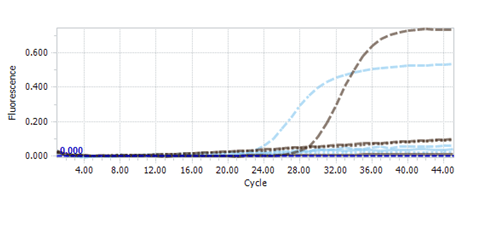Infection Screening Test
Male and Female infertility is attributed to many factors. Male infertility causes can be classified into three categories: pre-testicular, testicular and post testicular, female infertility causes may be attributed to cervical, vaginal, endocrine, tubal and uterine factors. Among the many factors that cause infertility infections are one of the major reasons for many cases of infertility in many parts of the world. Several infections have been studied to understand their role in infertility.
The most common infections found in Indian population are Chlamydia trachomatis, Neisseria gonorrhoeae, Mycoplasma genitalis, UreaplasmaUrealyticum, Trichomonas vaginalis, Mycoplasma hominis, HSV, HPV, Mycobacterium tuberculosis(MTB). The interaction of these infectious organisms with the host and their natural microbiome cause infertility. Most of these infections in the reproductive system are asymptomatic and is difficult to recognize.
Chlamydia trachomatis is more frequent in united states and less common in Indian population, the heat shock protein released by CT causes tubal occlusions in the fallopian tube leading to infertility.
N.Gonorrhoeae may cause pelvic inflammatory disease in women and epididymitis, prostatitis in men leading to subfertility/infertility. Genital Mucosa is the main area of colonization for NG. NG forms microcolonies by replication after adherence to epithelial cells. During growth it induce the host cells to release cytokines and chemokines ultimately leading to production of macrophages and neutrophils. The N.Gonorrhoeae developed mechanisms to survive with in these phagocytic cells.
Trichomoniasis is caused by an anaerobic parasite called Trichomonas vaginalis. This is found in urethra and sub-preputial sac in males leading to lesions in the penis and also interfere with the sperm function. This is found in urethra, vagina in females causing urethral discharge, irritation etc. T.Vaginalis helps to intrude other bacteria thereby increasing the pathogenicity leading to reproductive failure.
Mycoplasma genitalium is one of the smallest bacteria. Mycoplasma genitalium causes nongonococcal urethritis in male and salpingitis, pelvic inflammatory disease, mucopurulent cervicitis and endometitis in female.M.genitalium causes increase in secretory vesicle formation and destruction of microvilli in the endocervical cells. Recently it was demonstrated that the mycoplasma genitalion can adhere to different parts of sperm cells and affect the sperm motility.
The most common pathogens that are known to cause infertility are ureaplasma and mycoplasma belonging to the Mycoplasmataceae family. Both ureaplasma and mycoplasma can cause non-gonococcal urethritis, they affect sprm motility, concentration and morphology. They can also cause vaginosis, pelvic inflammatory disease and tubal factor. These are one of the major cause recurrent pregnancy losses in women.
HSV is one of the most common viruses known to cause wide spectrum of disease including neonatal infections causing injury to baby’s nervous system and genital disease. It is again differentiated into two types i) HSV-1 and HSV-2. HSV-2 has more capacity for reinfection. HSV is known to affect accessory glands. HSV is known to induce apoptotic cells and reduce spermatogenesis. Genital herpes is an important factor for maintaining pregnancy.
One of the most common cause of miscarriages or spontaneous abortions are Human papillomavirus infection. HPV is known to affect the immune system response. It also induces antisperm antibodies. HPV organism has two phases virion and the infected cell. The virion affects the sperm parameters and thereby affecting male infertility. It is identified that sperm can carry viral genome into oocyte and blastocyst causing adverse pregnancy outcomes.
Extrapulomonary mycobacterium tuberculosis (MTB) can cause female infertility. Genital tuberculosis can affect cervix, endometrium, ovaries and fallopian tubes. This pathogen may cause severe pelvic pain, menstrual irregularities, vaginal bleeding and infertility. Women with tubal and intrauterine adhesions have very low prognosis for fertility due to damaged endometrial cavity and blocked fallopian tubes.
Most of these pathogens are very difficult to identify by normal conventional microbiology. The limitation has been overcome by NAAT technology. Nucleic acid amplification test allows us to identify these pathogens at a very early stage from different types of samples collected from infertile men and women. After nucleic acid extraction from specimen, Realtime PCR is used to amplify and identify the presence of these pathogens. Different types of specimens include: semen, urine, urethral swab, cervical scrapings or swabs, vaginal swabs etc.,
Chlamydia trachomatis is more frequent in united states and less common in Indian population. CT can cause latent and chronic infections. CT has an ability to persist in the tissue and can contribute to reoccurrence of a disease in the long term. CT generally occurs in young women at early ages of reproduction. , the heat shock protein released by CT causes tubal occlusions in the fallopian tube leading to infertility.



